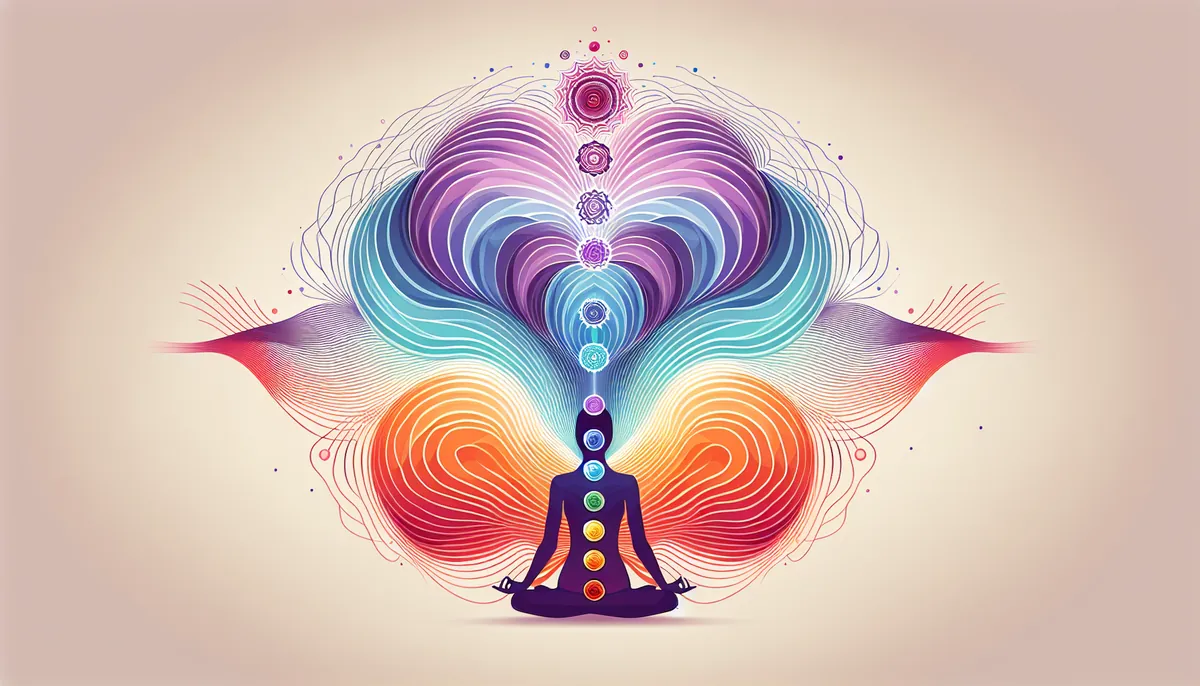The ancient practice of Kriya Yoga offers profound methods for balancing and activating our chakras, the vital energy centers that influence our physical, mental, and spiritual well-being. In this comprehensive guide, we'll explore how to use specific Kriya Yoga techniques to align and energize your chakras, creating harmony throughout your entire being.
While meditation practices in Kriya Yoga form an essential foundation, chakra balancing adds another dimension to this transformative practice. By understanding and working with these energy centers, you can address specific aspects of your life that need attention and healing.
Understanding the Chakra System in Kriya Yoga
In Kriya Yoga, the chakras are viewed as spinning vortexes of energy that run along the spine, each corresponding to different aspects of our consciousness. These energy centers can become blocked or imbalanced due to stress, emotional trauma, or negative thought patterns.
The Seven Main Chakras and Their Significance
- Muladhara (Root Chakra)
- Location: Base of spine
- Element: Earth
- Focus: Stability, security, and grounding
- Svadhisthana (Sacral Chakra)
- Location: Lower abdomen
- Element: Water
- Focus: Creativity, emotions, and relationships
- Manipura (Solar Plexus Chakra)
- Location: Upper abdomen
- Element: Fire
- Focus: Personal power and self-esteem
- Anahata (Heart Chakra)
- Location: Center of chest
- Element: Air
- Focus: Love, compassion, and connection
- Vishuddha (Throat Chakra)
- Location: Throat
- Element: Ether
- Focus: Communication and self-expression
- Ajna (Third Eye Chakra)
- Location: Between eyebrows
- Element: Light
- Focus: Intuition and wisdom
- Sahasrara (Crown Chakra)
- Location: Top of head
- Element: Consciousness
- Focus: Spiritual connection and enlightenment
Kriya Yoga Techniques for Chakra Balancing
1. Preparatory Practices
Before beginning chakra-specific techniques, establish a strong foundation with these preliminary practices:
- Seated Meditation Posture
- Sit in a comfortable position with spine straight
- Allow shoulders to relax naturally
- Rest hands on knees in Gyan mudra
- Conscious Breathing
- Practice deep, rhythmic breathing
- Observe the natural flow of breath
- Gradually extend the length of inhalation and exhalation
2. Root Chakra Activation
Muladhara Kriya:
- Sit in Vajrasana (thunderbolt pose)
- Focus attention at the base of spine
- Practice root lock (Mula Bandha)
- Visualize a red, four-petaled lotus
- Chant "LAM" mantra
3. Energy Flow Practices
Chakra Breathing Technique:
- Begin at the root chakra
- Inhale, visualizing energy rising through each chakra
- Exhale, allowing energy to settle
- Progress through all chakras systematically
Advanced Chakra Balancing Methods
1. Kundalini Awakening Practice
This advanced technique should be practiced under guidance:
- Preparation
- Perform preliminary breathing exercises
- Establish steady meditation posture
- Activate Mula Bandha
- Energy Movement
- Focus on each chakra sequentially
- Use specific mantras for activation
- Incorporate mudras for energy direction
2. Chakra-Specific Kriyas
Heart Chakra Balancing:
- Place hands in prayer position at heart
- Practice alternate nostril breathing
- Visualize green healing light
- Chant "YAM" mantra
Third Eye Activation:
- Focus attention between eyebrows
- Practice Shambhavi Mudra
- Maintain steady breath
- Visualize indigo light
Integration and Daily Practice
Creating Your Routine
- Morning Practice (15-20 minutes)
- Basic chakra breathing
- Focus on one specific chakra daily
- Integration meditation
- Evening Practice (10-15 minutes)
- Gentle energy alignment
- Gratitude meditation
- Relaxation techniques
Signs of Chakra Balance
- Increased energy and vitality
- Emotional stability
- Enhanced intuition
- Better relationships
- Clearer communication
- Deeper spiritual connection
Safety and Precautions
- Practice Guidelines
- Start slowly and progress gradually
- Listen to your body's signals
- Maintain regular practice schedule
- When to Seek Guidance
- If experiencing intense energy movements
- When dealing with physical conditions
- For advanced practice progression
Conclusion
Chakra balancing through Kriya Yoga offers a powerful path to physical, emotional, and spiritual well-being. By incorporating these practices into your daily routine, you can experience profound transformation and inner harmony. Remember that this is a journey of self-discovery – be patient and consistent with your practice.
Begin with the basic techniques and gradually progress to more advanced practices as you become comfortable. Pay attention to how your body and energy system respond, and always practice with awareness and respect for your current capabilities.
We encourage you to share your experiences with these practices in the comments below. How has chakra balancing through Kriya Yoga impacted your life? What challenges have you encountered, and what breakthroughs have you experienced?
Important Note: While these practices are generally safe, it's recommended to learn them under the guidance of a qualified teacher, especially when advancing to more complex techniques. Listen to your body and progress at your own pace.
